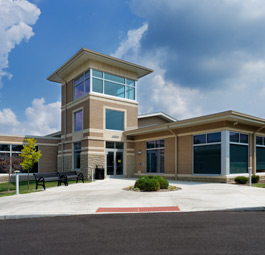Conflict Resolution: A Critical Life Skill
Growing up in rural Coshocton County, I was so fortunate to have my grandparents nearby; to learn and grow from their wisdom. My Grandfather Hoy, a United Methodist minister, was a tremendous influence on my life. His practical wisdom still has a profound impact on the things I say and do. One of his favorite sayings was, “Human beings need to learn to disagree agreeably.” How true that is today in a world that is filled with conflict and stress.
I believe we need to teach our children the skill of “disagreeing agreeably” even when they are facing “elementary-sized” conflicts. Now is the time to help young learners develop a sense of control over their reactions and provide strategies that will help them feel empowered.
I asked the Maple Dale teachers to provide some practical “tips” for helping children learn to resolve conflicts in a mutually agreeable way. Here is Maple Dale’s list of “Top Ten Strategies” to help kids resolve conflicts agreeably.
10. An adult picks a number written on a popsicle stick from a can. Have the two children in conflict pick a number between one and ten. The adult rolls a dice and reveals who was closest to the “magic number”. The child closest to the roll on the dice gets to choose the game or activity.
9. Two children have a meeting in “thinking chairs” to talk through a conflict issue. When resolved, the students report back to the adult what the decision was. If they still need help resolving the conflict, the adult can offer some guiding questions to prompt them as they return to the thinking chairs.
8. Actively teach the STALL method--Stop, Take turns, Accept, Listen and (show) Love.
7. Put letters in a basket. Each student picks a letter. The student with the letter closest to the beginning letter in their first name goes first and gets to tell their side of the story first. After both sides have been heard, the students pick a solution together and report it to the adult.
6. Have two students write about the conflict and their feelings in a Writer’s Journal entry. Take the time to read these to each other and practice active listening. When done, each child again writes about how talking it out solved the problem.
5. Teach children that we are responsible for what we say and do. Use Morning Meeting time each day to affirm one another with positive messages. Building a bank of positive messages helps kids feel important and valued.
4. Adults actively model the power of compromise. Children notice how we treat adults. Model what a good compromise looks like and talk with your child about how it feels to compromise.
3. Play board games! They are a great way to model taking turns, being honest, being a good sport and being a gracious winner.
2. Help children use “I messages” when talking. “I felt happy when you chose me for the game.”
“I felt sad when you did not want to play with me.” Often children act on feelings and are not able to articulate them. Using words helps other children understand what may be causing the conflict.
1. Actively practice listening and responding by taking turns in conversations. Help children understand why it is important to see the other person’s point-of-view.
Thank you to the Maple Dale staff for their thoughtful approaches to teaching conflict resolution!
